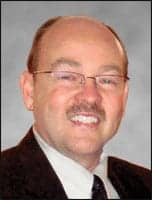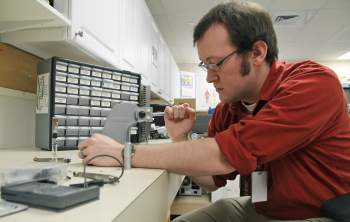
Julie Kirst, Editor
This month, Chicago will once again open its gates to the Radiological Society of North America (RSNA) as its members gather for the 97th Scientific Assembly and Annual Meeting from November 27 to December 2. RSNA’s annual meeting furthers its mission of promoting high standards in radiology and related sciences by featuring sessions on the most up-to-date research and an exhibit hall with more than 700 exhibitors.
In addition to the exhibit hall, clinical engineering professionals in attendance will find a number of sessions of interest, such as a tutorial on equipment selection that highlights advanced imaging applications available in the United States, advances in ultrasound, clinical applications of advanced ultrasound, and a PACS overview.
Even though manufacturers will showcase new devices, the industry faces obstacles to innovation, according to research firm Ernst & Young’s annual report on the medical device industry’s performance, “Pulse of the Industry: Medical Technology Report 2011,” released September 27. Apparently emerging from the global recession, revenues for all public medical technology companies rose 4% in 2010 over the prior year, but a combination of regulatory pressures and funding strains could dampen future growth. The report also stated that investment from venture capital firms, a vital source of funding for device start-ups, fell 13% in 2010 compared to the prior year.
This is not to say there isn’t money for worthwhile technology ventures available.The Office of the National Coordinator for Health Information Technology—the principal federal entity charged with coordinating nationwide efforts to implement and use advanced health information technology and the electronic exchange of health information—and Health 2.0, through the Investing in Innovation (i2) Initiative, have launched two competitions to challenge developers to create unique health IT applications.
One competition, “Ensuring Safe Transitions from Hospital to Home,” accepted submissions until November 16, 2011. Still open, the “Reporting Device Adverse Events” competition will accept submissions until December 2, 2011, and will award several tiers of prizes totaling $40,000. The first-prize winner will receive $25,000 and be invited to demonstrate the winning system at a major health care conference.
If you—or someone in your IT department—are game to create an app for this challenge, design a system that enables patients to easily record adverse events associated with medical devices used in the hospital, clinic, or home, or with implanted medical devices. Recorded adverse events should prompt alerts to the patient’s physician, who can then use the data to submit a high-quality adverse event report through the FDA’s Manufacturer and User Facility Device Experience—or MAUDE—database. The system should support the exchange of health care data with existing electronic health record (EHR) systems and other hospital information systems.
Managed by Health 2.0 through its Health 2.0 developer challenge program, it will judge submissions for the “Reporting Device Adverse Events” on data tracking efficacy, usability and design, interoperability with existing EHRs and other data sources, and overall display of creativity and innovation.
If you attend RSNA, be sure to let me know about the latest innovations that impressed you and that you would most like to implement in your hospital. Until then, I wish you all a Happy Thanksgiving.
Julie Kirst





